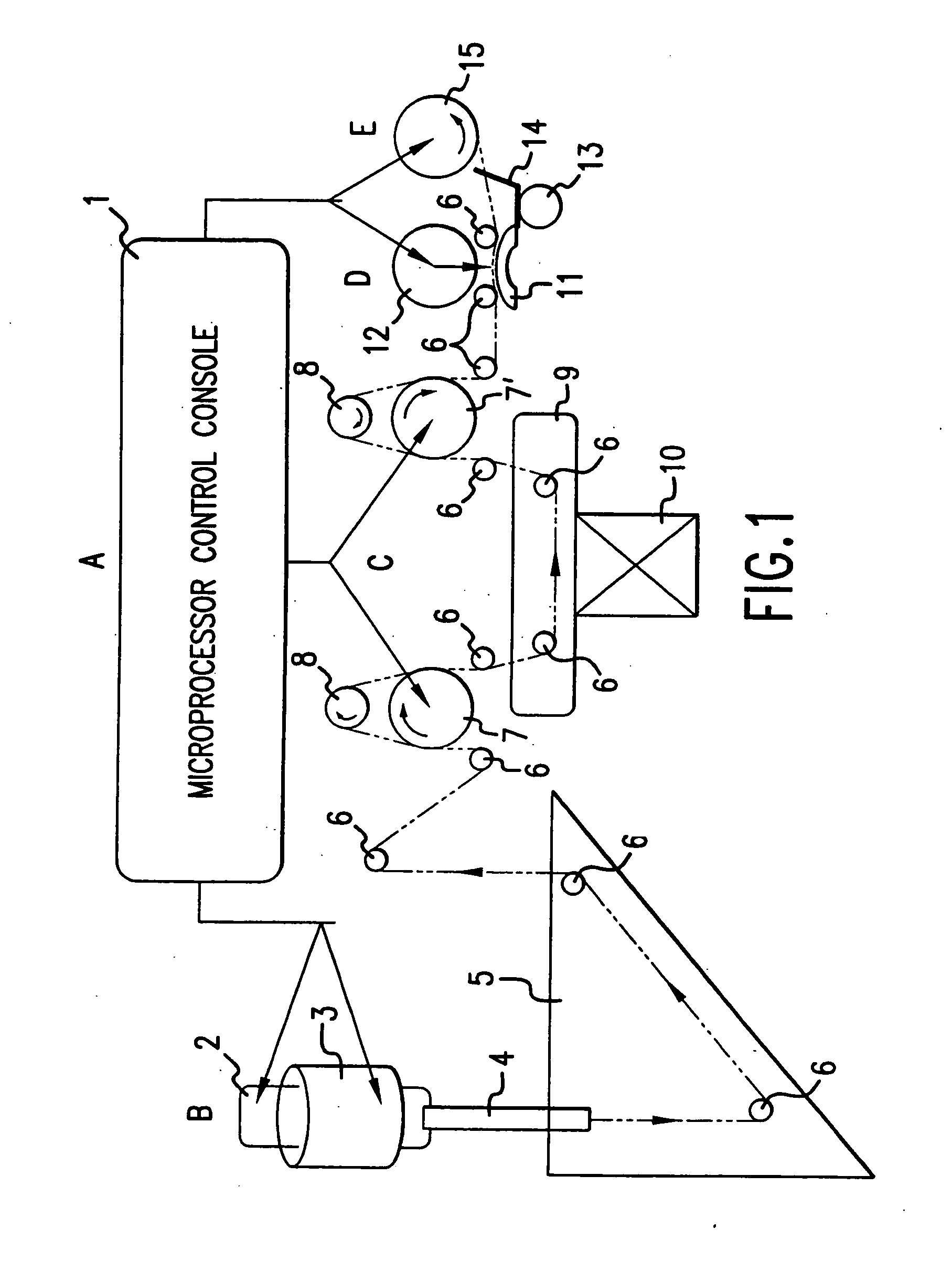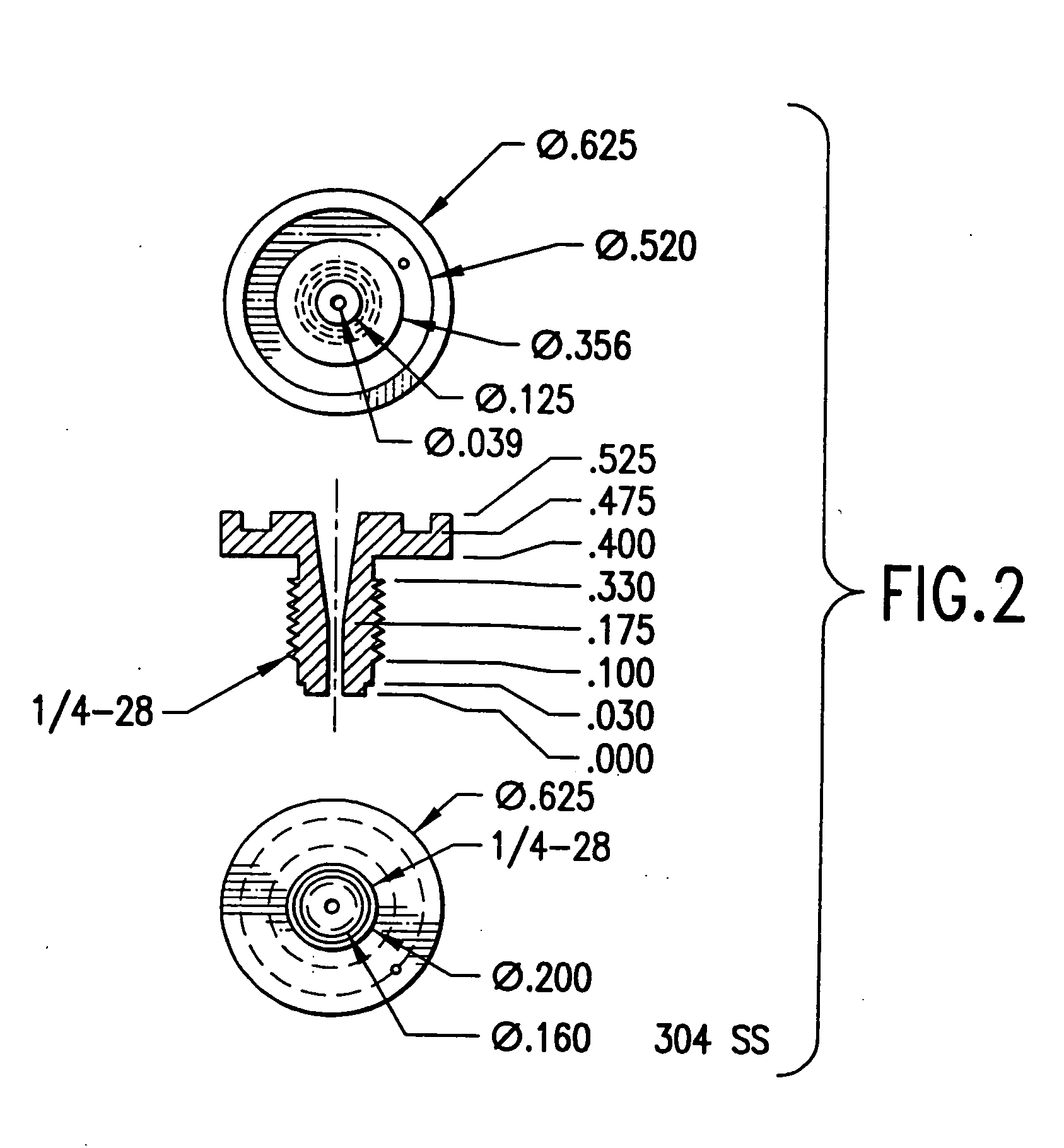Methods and apparatus for spinning spider silk protein
a technology of spider silk protein and spinning machine, which is applied in the direction of monocomponent protein artificial filaments, peptide sources, protein/protein ingredients, etc., can solve the problems of unavailing commercial fibers derived from spider silk proteins, maintain stability, integrity, workability, etc., and achieve the effect of improving ductility and plasticity, and reducing the number of fibers
- Summary
- Abstract
- Description
- Claims
- Application Information
AI Technical Summary
Problems solved by technology
Method used
Image
Examples
example 1
6.2. Example 1
Purification of Recombinant MaSpII Spider Silk Protein from Transgenic Goat Milk
[0161] A tangential flow filtration system was constructed as illustrated schematically in FIG. 9. A volume of 3180 ml of milk produced by transgenic goats (containing approximately 3000 mg of MaSpII) was placed in the Sample Tank. See U.S. patent application Ser. No. 10 / 341,097, entitled Recovery of Biofilament Proteins from Biological Fluids, filed Jan. 13, 2003 (attorney docket no. 602922-999009), which is herein incorporated by reference in its entirety. The Buffer Tank was charged with 3180 ml of Buffer A (50 mM Arginine, pH 6.8) and connected to the Feed Tank. To start the clarification process, 3180 ml of Buffer A was introduced into the Feed Tank. Pump A was used to drive the clarification unit. A hollow fiber membrane cartridge of 750 kD cutoff (UFP 750 E 6A, A / G Technology Corp, Needham, Mass.) was equilibrated with Buffer A. The inlet pressure was adjusted to 5 psi and outlet pr...
example 2
6.3. Example 2
Preparation of Dope Solution of MaSpII Protein
[0166] 6.3.1. Solubilization of the Spider Silk Protein Using Guanidine-HCl
[0167] Approximately 0.5 ml of guanidine-HCl (6 M) was added to 413 mg of the MaSpII pellet obtained as described in Example 1. The pellet was carefully ground with a glass rod to obtain a homogeneous mixture. Another 80 ml of guanidine-HCl (6 M) was added to the mixture and then incubated at 60° C. in a water bath for 30 minutes. The suspension was briefly vortexed every 10 minutes during the 30 minute incubation period. Insoluble materials were removed from the MaSpII solution by decanting the supernatant following a one hour centrifugation at 30000×g (4° C.).
[0168] 6.3.2. Buffer Exchange: Removal of Guanidine-HCl
[0169] Buffer exchange chromatography was performed using a Bio-Rad Biologic LP system (Bio-Rad Laboratories, Hercules, Calif., USA). A 5×25 cm Sephadex G-25 medium resin column (Amersham, Piscataway, N.J., USA) was prepared and equili...
example 3
6.4. Example 3
Biofilament Spinning Using a Methanol / Water / Acetic Acid Coagulant
[0173] For spinning, the dope collected in the above examples (18.8% w / v of MaSpII spider silk protein in 50 mM glycine buffer at pH 11; see Examples 1-2) was loaded into a 2.5 ml syringe (Hamilton Gastight 1002C) positioned in a DACA SpinLine spinning machine (DACA Instruments, Goleta, Calif.). The extruder barrel of the DACA SpinLine machine was modified to accommodate a syringe. The syringe was mounted vertically downward and the plunger was compressed by the screw driven motor of the DACA extruder, forcing the dope through a {fraction (1 / 16)}″ PEEK tubing spinneret (0.127 mm orifice diameter; 50 mm length) into a room temperature coagulation bath containing 90% methanol, 9.4% water, and 0.6% acetic acid. The plunger extrusion speed was 0.6 mm / min. The typical resident time of the resulting biofilament in the coagulation bath was about 30 seconds. Some biofilament was wound on a bobbin (0.19 m diamete...
PUM
| Property | Measurement | Unit |
|---|---|---|
| temperature | aaaaa | aaaaa |
| temperature | aaaaa | aaaaa |
| tube length | aaaaa | aaaaa |
Abstract
Description
Claims
Application Information
 Login to View More
Login to View More - R&D
- Intellectual Property
- Life Sciences
- Materials
- Tech Scout
- Unparalleled Data Quality
- Higher Quality Content
- 60% Fewer Hallucinations
Browse by: Latest US Patents, China's latest patents, Technical Efficacy Thesaurus, Application Domain, Technology Topic, Popular Technical Reports.
© 2025 PatSnap. All rights reserved.Legal|Privacy policy|Modern Slavery Act Transparency Statement|Sitemap|About US| Contact US: help@patsnap.com



